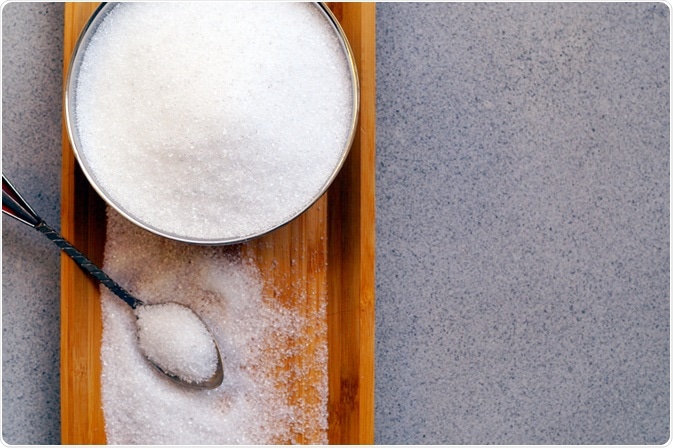Isotope dilution is used to determine the quantity of a chemical substance in a sample. In this method, isotopically enriched material is added to a sample which leads to a "dilution" of the standard. Random sampling is then performed to give the ratio of the standard and sample, which can then be used to infer the quantity of material within the sample.
 Mariola Anna S | Shutterstock
Mariola Anna S | Shutterstock
Carbohydrate and sugar analysis
Isotope-Dilution Liquid Chromatography is a potent method to determine carbohydrates and sugar levels in alcohol. Mono-and disaccharides can be simultaneously separated and identified with a detection limit of 50 pmol.
This method allows the detection of glucose at low isotopic dilution levels ranging from 0.1–1%, while sorbitol can be detected at a labeled/unlabelled ratio of 1:1. These can be detected in samples such as blood serum or amniotic fluid. This has also been used in clinical investigations to determine the concentration of sorbitol in amniotic fluid and in children that suffer from glycogen storage disease type I.
Identifying activated carboxylates in cells and tissues
The principle form of activated carboxylates in cells and tissues are acyl-coenzyme A (CoA) which in the form of acyl carriers is involved in the transfer of acyl groups to lipids and proteins. However, due to their instability, it has been difficult to quantify the medium-chain and long-chain acyl-CoAs.
Isotope dilution liquid chromatography and stable isotope dilution-liquid chromatography-selected reaction monitoring-mass spectrometry (LC-SRM/MS) have provided ways to specifically and sensitively analyze the CoA species. These methods have facilitated the quantification of medium- and long-chain acyl-CoAs in various cells and tissues and their roles in metabolism.
Diet and nutritional supplements
Various analytical methods can be employed to assess the levels of specific molecules in food products; however, it is a challenge as every food product has varying composition. In a particular study, the amount of ochratoxin A (OTA) was analyzed in Canadian diets.
OTA is a potential carcinogenic and the natural occurrence of OTA in human foods, such as cereals, coffee, beans, dried fruits, etc. has been extensively investigated.
In one study, Isotope dilution liquid chromatography was used to quantify the levels of OTA in an average Canadian diet. Recent studies have also used isotope dilution to measure the levels of compounds such as selenium, solubilized selenium, selenomethionine, etc. in yeast-based nutritional supplements.
Determining the levels of metabolites in urine
A recent study used isotope dilution liquid chromatography and tandem mass spectrometry to quantify the levels of metabolites of pesticides in the urine. The metabolites that were tested included atrazine, malathion, and 2,4-dichlorophenoxyacetic acid (2,4-D).
The process was initiated by extracting the urine sample using an organic solvent and concentrating this fraction. This concentrate was then subjected to isotope dilution liquid chromatography. The metabolites could be detected with great sensitivity and precision at a concentration of less than 0.5µg/L in 10mL of urine.
Determining drug levels in blood plasma
A combination of isotope dilution liquid chromatography and tandem mass spectrometry has been used in studies to quantify the presence of drugs such as rizatriptan in human plasma. Chromatography was performed using a 50 × 4.6 mm, 2.7 μm column where ammonium formate formed the mobile phase and the flow rate was around 0.5mL/minute.
The levels could be quantified for amounts as low as 12.5 fg, and stability of the drug could be maintained through various freeze-thaw cycles. This method was tested in 25 healthy human male samples who were administered rizatriptan orally.
Further Reading